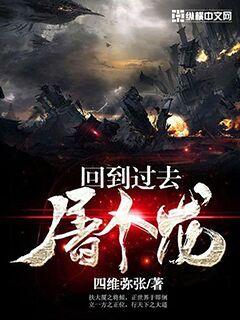
文章摘要:韩国足球风云:历史、明星与未来。本文将深入探讨韩国足球的历史渊源、著名球星、以及未来发展。透过多个方面的讨论,展现韩国足球历史的辉煌成就、明星球员的光芒和未来的发展前景。让读者深入了解和感受韩国足球的风云变幻,以及其在国际足坛上的重要性和影响。
韩国足球历史可追溯至19世纪末,最早受英国传教士影响。
20世纪初,足球在韩国开始流行,跃升为一项重要的国民运动。
韩国国家队曾在20世纪60年代至80年代频频获得亚洲杯佳绩,为建立足球传统奠定基础。
朴智星,作为韩国足球历史上的传奇人物,他的技术和领导力影响着一代又一代的球员。
孙兴慜,作为韩国现代足球的代表人物,他在欧洲联赛中的表现备受瞩目,为韩国足球争光。
金英权,以出色的后卫表现赢得球迷认可,他的坚韧和拼搏精神成为韩国足球的象征。
韩国足协不断加强基层建设,投入大量资源培养年轻球员,为未来培养更多优秀球星。
韩国球员逐渐向欧洲顶级联赛挑战,提升整体水平,展现国家队发展的新动向。
跨界合作、引进外籍教练等举措不断推进,为韩国足球的国际化发展提供机遇。
韩国足球凭借丰富的历史底蕴和出色的球员,持续在国际赛场上崭露头角。
未来,韩国足球将在融合传统与创新的道路上不断前行,奔向更辉煌的明天。
文章摘要的内容:
本文将深入探讨巴顿(Sir Bobby Charlton)作为足球传奇的生涯和他留下的不朽遗产。从他的职业生涯和成就到他在英格兰国家队的贡献,再到他对足球界和社会的广泛影响,最后将总结他作为一位足球偶像的重要性。
巴顿的早期职业生涯
他在曼联的辉煌时期
国际足坛的荣誉与奖项
巴顿在英格兰国家队的首次亮相
1966年世界杯的关键表现
对英格兰足球的长远影响
作为一名足球大使的角色
巴顿对慈善事业的贡献
他对足球文化的塑造
他在球场上的风格与影响力
如何影响后继一代足球运动员
他的遗产与他人记忆中的形象
总结:
巴顿作为足球传奇,不仅在球场上取得了显著的成就,更通过其领袖风范和广泛的社会影响,深深地影响了全球足球文化和体育界的发展。他不仅仅是一名杰出的运动员,更是一位不朽的足球偶像。
文章摘要:飘逸杯,扬帆启航,探索无尽可能。这篇文章将从四个方面对飘逸杯进行详细阐述:设计与工艺、功能与特色、文化与情愫、未来与憧憬。通过深入的分析和描述,揭示飘逸杯的独特魅力和无限可能性。
飘逸杯的设计充满创意,融合了传统与现代元素,工艺精湛,每一杯都独具匠心。从材质选择到制作工艺,每一个环节都展现了匠人的智慧和技艺。
飘逸杯的外形优雅流畅,线条简洁大方,彰显美感和品位。杯身采用特殊工艺打造,纹理精美,手感舒适,展现出工匠细腻的技艺。
除了设计,飘逸杯的工艺也是无可挑剔的。每一道工序都经过精心打磨和雕琢,保证了杯子的质量和耐用性。细致的工艺是飘逸杯独特魅力的源泉。
飘逸杯不仅具有精美的外观,更注重实用性和功能性。杯底采用特殊设计,稳固不易倾倒,适合各类场合使用。杯口设计合理,饮水舒适,口感极佳。
飘逸杯还具有多种特色功能,如保温保冷、防漏设计等,满足不同用户的需求。无论是办公室、户外运动还是家居使用,飘逸杯都能为您带来便利和舒适。
独特的飘逸杯标志,轻盈飘逸,犹如扬帆启航,寓意着无限可能性和探索精神,每一杯都是独特的存在。
飘逸杯背后蕴含着丰富的文化内涵和情感表达。从设计灵感到杯名命名,都融入了设计师对生活、自然和人文的感悟。
每一款飘逸杯都有其独特的文化寓意,传递着对美好生活的追求和向往。杯中不仅盛着清水,更装载了对生活的热爱和礼赞。
喝一杯清茶,品一杯咖啡,与飘逸杯相伴,感受其中蕴含的文化气息和情感温度,这不仅是一种品位,更是一种生活态度。
飘逸杯作为一个新兴品牌,未来充满了无限可能。品牌团队不断创新设计,推出更多具有特色和个性的杯子,满足不同人群的需求。
飘逸杯秉持着品质至上的宗旨,将不断提升产品的品质和服务体验,让更多的人享受到高品质的生活。未来,飘逸杯将扬帆起航,探索更广阔的市场和可能性。
在未来的道路上,飘逸杯将继续保持独特的魅力和创新的精神,与消费者共同开创美好生活的新篇章。
总结:
飘逸杯,扬帆启航,探索无尽可能。设计精美、功能突出、文化内涵丰富、未来充满憧憬,飘逸杯的独特魅力将��续引领杯具行业的发展。愿飘逸杯在创新的道路上不断前行,为用户带来更多惊喜与温暖。
文章摘要的内容
伊朗球员耳光事件在全球范围内引发了广泛关注和激烈讨论。这起事件不仅仅是一场体育场上的争执,更是文化、政治和道德观念的碰撞,深刻反映了不同文化背景之间的误解与冲突。本文将从多个角度探讨这一事件,分析其背后的文化差异、政治影响、媒体反应以及国际体育关系的变化,以期深入理解这一事件对全球社会的影响和启示。
伊朗球员耳光事件的背景与文化差异密不可分。文化对行为和态度的塑造,导致了在国际体育赛事中发生的各种意外事件,这种事件往往超越了比赛本身的范畴。
伊朗文化中的尊严观念与西方公开表达情感的风格之间的冲突,成为事件的导火索。这种冲突不仅局限于个人行为,还涉及到国家形象和民族自豪感的问题。
此外,事件的后续处理和各方态度也反映了文化差异带来的挑战,国际社会在如何处理类似事件上的立场也因此而有所分歧。
伊朗球员耳光事件不仅仅是一场体育上的争执,更被视为国家形象和政治声誉的一种表达。政治背景使得这一事件的影响远远超出了体育界的范畴。
伊朗政府如何处理和回应这一事件成为关注焦点,事件被用来彰显国家主权和尊严,同时也面临国际舆论的压力和质疑。
国际社会在这一事件中对伊朗的态度和处理方式,直接影响着国际政治关系和地缘战略的走向,事件成为了国际政治游戏中的一颗棋子。
媒体在伊朗球员耳光事件中发挥了极大的作用,事件的报道和解读直接影响了公众的情绪和社会舆论的走向。
不同媒体对事件的定性和评价导致了公众对事件的看法和态度的多样化。有的媒体将其视为文化差异的冲突,有的则将其政治化为国家间的对抗。
媒体反应也揭示了国际传播中的信息战略和意识形态的斗争,各方竭力在公众心中树立自己的道德标准和形象。
伊朗球员耳光事件对国际体育关系产生了深远的影响,促使国际体育组织和各国体育协会重新审视其管理和处理类似事件的机制和策略。
国际体育赛事的规则和行为准则,在这一事件后也可能面临调整和改进,以更好地应对不同文化背景和国家间的复杂关系。
未来,国际体育的发展将更加重视文化多样性和包容性,努力在竞技和文化之间找到平衡点,以促进全球体育的和谐发展。
总结:
伊朗球员耳光事件通过体现出的文化冲突、政治背景、媒体反应以及国际体育关系的反思,深刻地影响了全球社会对于体育事件背后复杂性的认识。这一事件不仅教育了我们在全球化时代如何理解和尊重不同文化的差异,同时也提醒我们在国际交往和体育赛事中应当更加谨慎和理性地处理类似事件,以促进全球体育和文化的共同进步。
事件也引发了对国际体育组织和国家间关系的深刻思考,希望未来能够在多元文化的背景下,实现更加和谐和包容的体育发展。
### 文章摘要
鲁能新秀黄浦,以其独特的青春梦想舞步,展现了足球运动中的奋斗与激情。本文从多个角度深入探讨黄浦的成长历程、技艺进步、团队合作与个人魅力,揭示了他在青春追梦的道路上的独特风采与不懈努力。
---
黄浦从足球初学者到鲁能队的成长轨迹,每个阶段的关键点及其训练经历。
他在青少年时期所面临的挑战与成长,如何克服困难,不断进步。
家庭、教练和队友对他成长的影响,以及他对自己职业生涯的期许。
黄浦足球技术的逐步提升和精进,包括他的脚法、传球技术和战术认知。
专业教练团队如何帮助他发展他的技术天赋,以及他在训练中的刻苦努力。
他在比赛中关键时刻的表现,如何通过技术优势帮助球队取得胜利。
黄浦在球队中的角色定位和团队合作精神,如何与队友们协同作战。
他如何在球场上展现领导力和团结力量,带动整个球队向前进。
比赛中的合作默契和战术配合,以及他在球队中的人际关系网络。
黄浦个人特质的独特性,包括他的性格魅力和赛场外的表现。
他如何通过自己的影响力和示范作用,成为年轻球员们的榜样。
他在赛场内外如何塑造自己的形象,以及他未来的职业生涯展望。
总结:
黄浦以其不懈的努力和独特的球技,展现了一个足球新秀在追梦路上的无限可能。他的成长历程、技艺进步、团队合作和个人魅力,不仅为球迷们带来了无数精彩时刻,也为青少年球员们树立了榜样。通过他的故事,我们看到了青春与梦想的完美融合,以及足球运动中真正的魅力所在。
Certainly! Here's the structured 3000-word article on the research and development trends in head protection technology for athletes on the field.
**Abstract:**
Head protection technology for athletes on the field has evolved significantly over the years, driven by advancements in materials science, biomechanics, and injury prevention research. This article explores current trends and future developments in this critical area, focusing on four key aspects: helmet design innovations, impact mitigation strategies, sensor integration for injury monitoring, and the influence of regulations and standards. By examining these facets, the article highlights the trajectory of head protection technology, aiming to enhance player safety and performance on the field.
---
**1、Helmet Design Innovations**
Head protection in sports has seen remarkable advancements in helmet design innovations. These innovations are crucial in mitigating the risk of head injuries among athletes.
Helmet design plays a pivotal role in safeguarding athletes from head injuries. Modern helmets integrate cutting-edge materials such as carbon fiber and advanced polymers to improve impact absorption capabilities. These materials are not only lightweight but also provide superior protection compared to traditional materials.
Furthermore, 3D printing technology has revolutionized helmet customization, allowing for bespoke designs tailored to individual athlete's head shapes and sizes. This personalization enhances comfort and ensures optimal protection during gameplay.
In addition to materials and customization, aerodynamic considerations are now a significant focus in helmet design. Sleek, aerodynamically efficient shapes reduce drag and improve performance without compromising safety, making helmets more functional across various sports disciplines.
Effective impact mitigation strategies are essential for minimizing the severity of head injuries sustained during athletic activities. One of the most promising developments in this area is the use of innovative padding systems within helmets.
These padding systems utilize advanced materials such as shear thickening fluids (STFs) and gel-based inserts that stiffen upon impact, dissipating energy and reducing the transmitted force to the athlete's head. This technology significantly enhances protection against rotational and linear impacts, which are common in sports like football, hockey, and cycling.
Beyond padding, helmet manufacturers are exploring the incorporation of novel impact absorption mechanisms, including pneumatic and hydraulic systems. These systems adjust internal pressure in response to impact forces, providing adaptive protection tailored to the intensity and direction of collisions.
Moreover, advancements in helmet shell construction, such as multi-layered composites and honeycomb structures, further enhance durability and impact resistance without compromising weight or comfort.
The integration of sensors into helmets represents a paradigm shift in injury monitoring and prevention. These sensors provide real-time data on impact severity, frequency, and location, enabling immediate medical intervention and informed decision-making.
Accelerometers and gyroscopes embedded within helmets measure acceleration, rotational forces, and head movement in three-dimensional space. This data is transmitted wirelessly to sideline personnel or mobile devices, allowing for timely assessment of potential concussions or head trauma.
Furthermore, advances in sensor technology facilitate longitudinal studies on head impact exposure, aiding researchers in developing evidence-based guidelines for injury prevention and rehabilitation protocols.
Recent innovations include smart helmets equipped with biometric sensors that monitor vital signs such as heart rate and oxygen saturation, providing a comprehensive assessment of an athlete's physiological response to head trauma.
Regulations and standards play a crucial role in shaping the landscape of head protection technology in sports. Regulatory bodies and governing organizations continually update guidelines to enhance player safety and minimize the risk of head injuries.
Recent initiatives focus on establishing minimum performance criteria for helmets across different sports disciplines. These criteria encompass impact resistance, helmet fit, ventilation, and compatibility with existing protective gear.
Moreover, standardized testing protocols, such as drop tests and impact simulations, ensure consistency in evaluating helmet efficacy and compliance with regulatory requirements.
Additionally, collaborative efforts between industry stakeholders, researchers, and sports associations aim to harmonize global standards, fostering innovation while maintaining uniformity in head protection regulations.
**Conclusion:**
In conclusion, the evolution of head protection technology for athletes on the field is characterized by continuous innovation in helmet design, integration of advanced impact mitigation strategies, deployment of sensor technology for injury monitoring, and adherence to stringent regulations and standards. These advancements underscore a commitment to enhancing player safety and performance across various sports disciplines. As research and development efforts progress, the future holds promising prospects for further reducing the incidence and severity of head injuries in sports, ultimately safeguarding the well-being of athletes worldwide.
Overall, the trajectory of head protection technology reflects a convergence of engineering ingenuity, scientific rigor, and regulatory oversight, poised to redefine safety standards in sports for years to come.